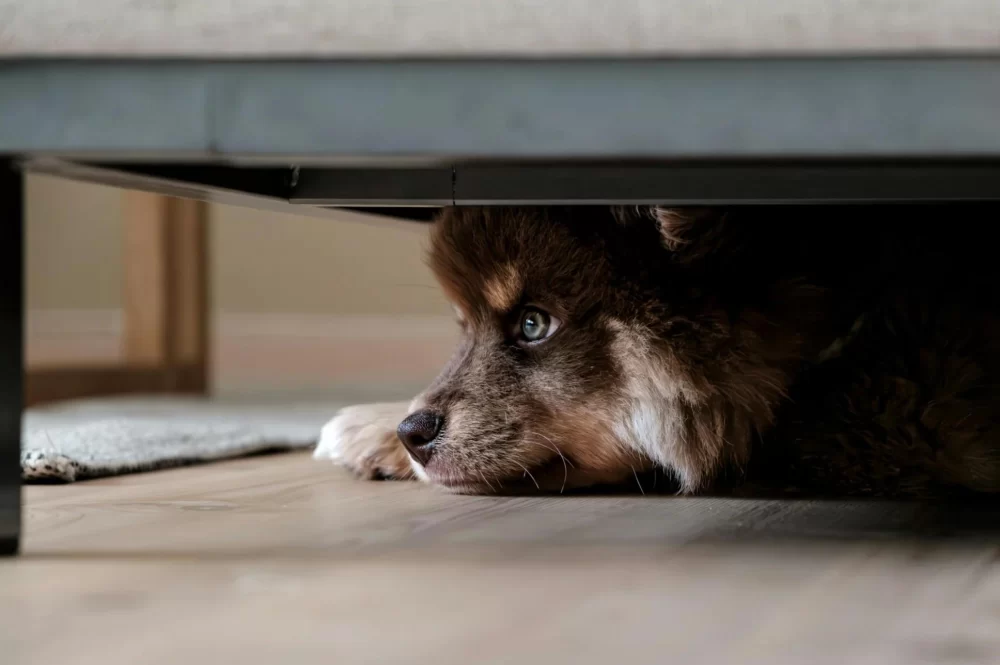Understanding Why Dogs Limp and Hide Under Furniture
As a dog owner, it's always distressing to notice your furry friend acting differently—especially if they're limping and seeking solace under furniture. These behaviors can be alarming, but they often serve as an indication of an underlying issue. I remember when my own dog, Max, started limping one morning. He wasn’t his usual energetic self, and the first thing I noticed was that he was hiding under the coffee table, an area he usually avoided. It wasn’t until I carefully examined him that I realized something was wrong. What followed was a journey of discovering the causes of his behavior and how to help him recover. In this article, I’ll take you through what might be happening if your dog is limping and hiding, as well as what you can do to help them feel better.
Why Do Dogs Limp?
Limping in dogs is a common sign of injury or discomfort. Just like humans, dogs can experience pain from a variety of sources. It could be as simple as a small cut on their paw or something more complex, like a torn ligament or even arthritis. When a dog limps, it's their way of telling us that something is wrong, and they may even favor a certain leg. But why does this happen? Here are some of the common causes:
- Injury: Dogs often get cuts or bruises from running or playing, and these injuries can make them limp. It’s essential to check their paws and limbs for any visible wounds.
- Joint or Bone Problems: Conditions like hip dysplasia or arthritis are common, especially in older dogs. These can cause a dog to limp because of joint pain or discomfort.
- Sprains and Strains: Just like us, dogs can pull muscles or ligaments, especially if they’ve been too active or done something out of the ordinary.
- Infections: Sometimes, an infection in the paw or leg can cause swelling, making it painful for your dog to walk.
What Does It Mean If Your Dog Hides Under Furniture?
If your dog is not only limping but also seeking refuge under furniture, it could be a sign of pain or distress. Dogs instinctively look for places where they feel safe and secure when they are in pain. For Max, hiding under the couch was a way for him to isolate himself because he was feeling vulnerable. This behavior is often linked to the following reasons:
- Fear or Anxiety: If your dog associates pain with a particular place or activity, they may seek out a hiding spot to retreat from what they perceive as a stressful situation.
- Instinctual Behavior: Dogs, in the wild, would often hide from predators or danger. This behavior may carry over to domesticated dogs when they are unwell or injured.
- Pain Relief: Hiding under furniture may also be an attempt to find a more comfortable spot where they feel less exposed or can rest without being disturbed.
What to Do If Your Dog is Limping and Hiding
If you notice your dog limping and hiding, it’s crucial not to ignore the signs. Even if the limp seems minor at first, it could be the beginning of a more serious issue. Here are some steps you can take to help your dog:
- Examine Your Dog: Look carefully at your dog’s paws, legs, and joints to see if there are any obvious injuries, like cuts, swelling, or bruising. Gently feel along their limbs to see if they react to touch, which could indicate pain.
- Limit Movement: To prevent further injury, keep your dog from running or jumping. Set up a comfortable resting area for them where they can relax without exerting themselves.
- Visit the Veterinarian: If your dog continues to limp or shows signs of distress, it’s time to schedule a visit to the vet. They will be able to diagnose the issue and recommend a treatment plan.
- Follow Treatment Recommendations: Depending on the diagnosis, your vet may suggest rest, medication, or even surgery if the injury is severe. It’s essential to follow their advice to ensure your dog’s recovery.
Real-Life Example: Max's Recovery Journey
To better understand the importance of acting quickly, let me share the story of Max’s recovery. After I noticed his limp and hiding under the furniture, I immediately took him to the vet. The vet diagnosed him with a mild sprain in his front leg. Thanks to early intervention, Max was able to recover fully with a few weeks of rest and physical therapy. I’ve learned that the sooner you address your dog’s discomfort, the better the chances are for a speedy and full recovery.
How to Care for a Dog in Pain
If your dog is dealing with pain, it’s important to be compassionate and attentive. Here are some tips on how to care for your injured dog:
- Keep them calm: Avoid situations that could cause your dog to become overly excited or stressed. Rest is essential for recovery.
- Provide a comfortable environment: Create a cozy spot for your dog to rest, whether it’s their bed or a quiet corner of the house.
- Offer gentle reassurance: Your dog may feel vulnerable during this time. Offer gentle petting and comfort to help them feel safe.
Remember, dogs can’t tell us what’s wrong, but they do communicate through their behavior. By observing your dog carefully and seeking professional advice, you can help ensure that they get the treatment they need to heal and feel better again.












